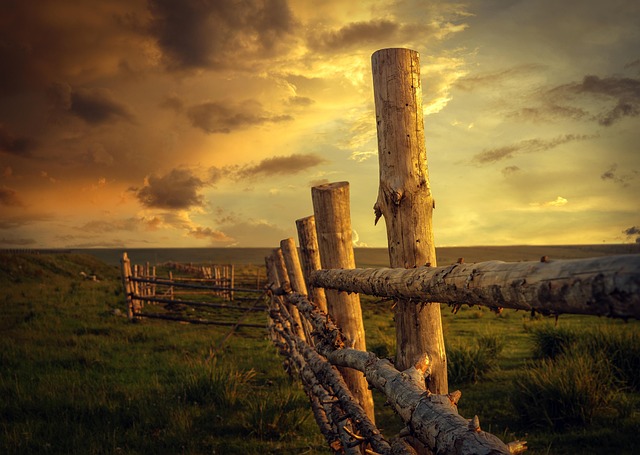In coastal regions, where harsh weather conditions and saltwater air challenge outdoor structures, durable wooden fencing offers an elegant solution. This article explores how the right type of wood can provide both functional and aesthetic benefits in these unique environments. We’ll delve into the specific challenges of coastal fencing, uncover the advantages of sturdy wood options, guide you through selection and installation, and share maintenance tips to ensure longevity.
- Understanding Coastal Fencing Challenges
- Advantages of Durable Wooden Fencing
- Choosing the Right Wood Species
- Installation Considerations for Coastlines
- Maintenance Tips for Longevity
- Enhancing Coastal Aesthetics with Wooden Fences
Understanding Coastal Fencing Challenges
Coastal areas present unique challenges when it comes to fencing due to their harsh, often unpredictable environments. Strong winds, salty air, and frequent exposure to moisture can significantly impact the longevity of traditional fencing materials. The primary goal is to find a durable solution that can withstand these conditions while also blending aesthetically with the coastal landscape.
One of the key considerations is selecting materials that are resistant to corrosion and rot, especially when exposed to salt water. Wooden fences typically require specialized treatments and finishes to enhance their durability. Proper maintenance becomes even more critical in these areas, as regular cleaning and sealing can help extend the life of the fence, ensuring it remains a functional and visually appealing boundary solution for years to come.
Advantages of Durable Wooden Fencing
Durable wooden fencing offers numerous advantages for coastal areas, where traditional materials might struggle to withstand the harsh marine environment. Firstly, wood has a natural resistance to corrosion and rust, which is critical near salt water. This makes it an ideal choice for regions with high humidity and salty air, as it won’t deteriorate as quickly as metal or certain synthetic compounds.
Additionally, wooden fences can provide excellent insulation against extreme coastal temperatures, both hot and cold. They offer a level of privacy and security without completely blocking out natural light, which is essential in open-air coastal communities. Moreover, with proper treatment and maintenance, these fences can last for decades, making them a cost-effective and aesthetically pleasing option for any property along the coast.
Choosing the Right Wood Species
When selecting wood for coastal fencing, choosing the right species is paramount. Softwoods like cedar and redwood are popular choices due to their natural resistance to decay and insects, making them ideal for harsh coastal environments. These woods also have a beautiful grain that enhances curb appeal. However, it’s essential to note that not all softwoods are created equal; higher-quality varieties will last longer.
Consider the local climate and conditions when making your decision. Coastal areas often face high humidity and salty air, which can accelerate wood decay. Look for species with natural preservatives like oils or resins that offer better protection against these elements. Additionally, treating the wood with preservatives after installation can significantly extend its lifespan, ensuring a durable and aesthetically pleasing fence.
Installation Considerations for Coastlines
When installing durable wooden fencing in coastal areas, several unique considerations come into play due to the environment’s harsh conditions. One of the primary challenges is the constant exposure to salt water and high humidity levels, which can accelerate wood decay. Therefore, it’s crucial to use treated or naturally durable wood species like cedar or redwood known for their resistance to moisture and fungal growth. The choice of fence posts should also account for corrosion from saltwater; steel or concrete posts with galvanised coatings are ideal.
Another important aspect is the potential for strong winds and storms. Fencing should be securely anchored to prevent uprooting or damage during severe weather events. This often involves deeper post-installation and the use of additional anchoring systems. Additionally, regular maintenance becomes even more critical in coastal settings. Regular cleaning, sealing, and painting or staining can significantly extend the life of the fence, protecting it from these harsh environmental factors.
Maintenance Tips for Longevity
To ensure your durable wooden fencing maintains its longevity in coastal areas, regular maintenance is key. Start by inspecting your fence at least twice a year for any signs of damage or deterioration, particularly after harsh weather conditions. Look out for rot, cracks, or peeling paint, as these could indicate potential issues.
Keep the fence clean by regularly brushing and washing it with mild detergent and water to remove salt deposits and other debris that can accelerate wood decay. Apply a fresh coat of protective paint or sealant every few years to shield the wood from moisture and UV rays. Lastly, ensure proper drainage around the fencing to prevent water accumulation, which can lead to rot and compromise its structural integrity.
Enhancing Coastal Aesthetics with Wooden Fences
Wooden fences have long been a popular choice for adding both privacy and security to properties, but they also offer an opportunity to enhance the coastal aesthetic. In areas with beautiful seaside landscapes, integrating durable wooden fencing can create a harmonious blend of functionality and natural beauty. The warm tones and organic textures of wood complement the surrounding environment, from sandy beaches to rugged cliffs, creating a sense of unity between the built and natural elements.
By opting for carefully selected, treated, and maintained wooden fences, coastal homeowners can enjoy not only robust protection but also an attractive addition to their outdoor spaces. These fences can be designed to mimic the patterns found in nature, such as waves or sea shells, further emphasizing the connection to the coast. This thoughtful approach to fencing design contributes to a picturesque setting, becoming a cherished feature that both residents and visitors alike appreciate.
